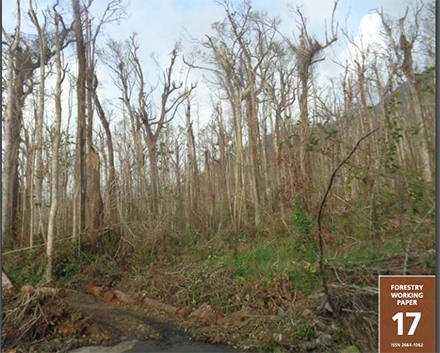FAO has published a new study on forest-related disasters that will help contribute to the development of effective responses for future incidents. Forest-related disasters – Three case studies and lessons for management of extreme events assesses three major disasters that affected forests. Source: Timberbiz
The three incidents: Gudrun, a powerful storm that struck Sweden in 2005, the Tohoku earthquake and tsunami in Japan in 2011, and a firestorm in Chile in 2017. The study makes key recommendations on how to prepare for similar disasters and how to deal with their aftermath.
The publication was released on the 16th anniversary of Gudrun, the strong storm that passed over northern Europe causing severe wind damage, power outages, and flooding.
“Forest disasters can be catastrophic for both the forests themselves and for the people who depend on them, and a single event can change the cultural and economic life of eg small island states entirely,” FAO Forestry Officer Jonas Cedergren said.
“Countries need to be prepared for these eventualities, but also take into account how useful forests can be to mitigate disasters, for example by reducing the intensity of tsunami flood waves or stabilizing slopes against landslides and avalanches.”
The study explains that while the disasters cause the greatest risk to human lives, it is the breakdown of critical infrastructure, for example falling trees blocking roads, that leads to increased casualties following an event.
Dead trees are meanwhile susceptible to insect pests that may go on to kill healthy trees, while dead woody material can become a source of easily combustible fuel for forest fires.
On the other hand, damaged trees can be used for heat, shelter and reconstruction, the paper says, but large numbers of trees felled in disasters can often exceed local processing capacity or distort normal market functioning.
The publication makes a series of recommendations for personnel responsible for disaster response including emergency services and forest sector staff in the public and private sectors.
Advance planning is vital, including training individual responders and teams, based on realistic simulations that can be effectively duplicated even in the absence of key personnel.
Equally important for preparedness is ready information on critical resources, including the contact details of forestry staff, location of forestry equipment and access routes and sites for timber storage, according to the study.
Following disasters, immediate human needs must be balanced with the longer-term environmental and biodiversity needs of the forest ecosystem, the paper stresses. Fallen and damaged timber is both a local reconstruction resource and an economic asset but prior planning and a clear policy on their use post-disaster must be in place. In addition, forest workers must be trained in all aspects of the risky work of salvaging timber particularly in clearing fallen timber and opening roads.
The publication also recommends a cooperative regional approach to disaster response, which would benefit small countries that cannot rely on their individual resources when facing repeated disasters. This approach ould include a pool of operators skilled in dealing with fallen timber, a joint equipment resource for forest work, joint disaster training and a unified incident control management system.
The publication can be downloaded at:






